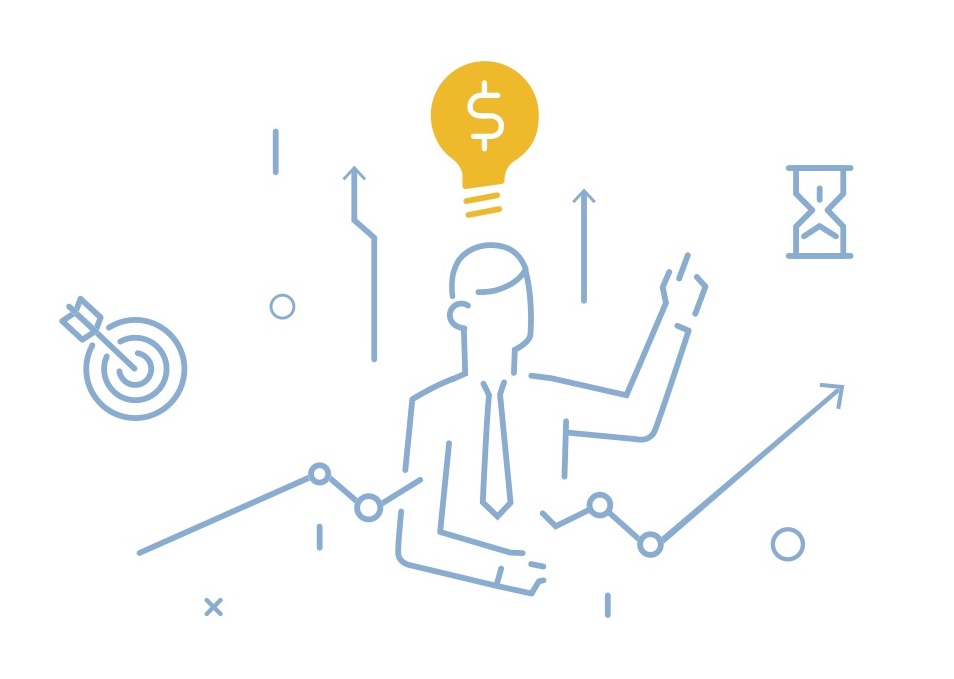46. 8 Austrian Actions for 2020
Entrepreneurship is action. It’s a process in which the actions of the entrepreneur are decisive. In the final podcast of 2019, we suggest 8 action steps you can take for the betterment of your business in 2020 and beyond.
Key Takeaways & Actionable Insights
Below are the 8 actions you can immediately take to make your business more Austrian in 2020.
1. Conduct an Empathic Diagnosis.
The entrepreneur’s first job is to understand the customer, their hopes and fears, their goals and wants, and their feelings. There’s a skill for that, and a method. The skill is empathy – the ability to feel what the customer feels.
The method is empathic diagnosis. The secret is not to ask the customer what they want or what they need, but to ask them how they feel. They can tell you that, but they can’t tell you why. That comes in step 2.
To ask them how they feel, use the Contextual Interview tool.
Think of it as a conversation with a customer whose feelings you are aiming to identify via a discussion in context. Look for responses that have “feeling” words – painful, frustrating, boring, annoying. Success! You’ve hit an emotional seam you can mine. Now dig in to understand their goals, and the means they choose to achieve those goals.
After the interview, you can collate the dissatisfactions, the emotional pain points and the functional failures. Then you can curate these inputs into functional, cognitive and emotional components of a potential new solution – i.e. new features (functional), new beliefs about what’s possible (cognitive) and better feelings about the experience (emotional). You now have a first building block for the design of a service or innovation that has high potential for facilitating new and higher value for the customer.
2. Construct a Means-End Chain to generate insights about hidden customer Motivations.
The output of your empathic diagnosis provides the basis for your next step. The goal is to generate an understanding about the motivations of the customer that they can’t quite explain themselves. People do not have introspective access to their motivations. Motivations are unconscious. People don’t know what Rory Sutherland calls the real why that explains their actions.
Smart entrepreneurs can find out this real why, using our means-end chain tool.
Take an easel pad or a wall, mark out the links as different levels, starting at the contact point at the bottom and advancing one by one to the highest value at the top. Use sticky notes to populate each level with the appropriate customer responses from the empathic diagnosis. Then join the most pertinent items together that link each level – at this contact point, they perceive these features and attributes, that generate this functional benefit and this emotional benefit all of which are logically land causally linked to the pursuit of the highest value. Recalculate this sequence a few times until you are confident you’ve identified the strongest route to the highest value the customer is seeking when he or she is in your space. You now have an insight into the customer’s hidden motivations, and you can use it to build a strong brand.
3. Build a strong brand with our Brand Uniqueness Blueprint.
Building a strong brand provides you with a financial machine – a capital asset that can generate customer revenues reliably over time, because it meets customer needs and solves customer problems better than any alternative.
You can download our Brand Uniqueness Blueprint here.
The brand uniqueness blueprint helps you identify the two parts of your brand foundation: who is it for – i.e. whose problem are you solving, whose needs are you meeting. The term for this is Relevance. And how are you solving that problem in a superior fashion – that’s Differentiation.
Use our brand uniqueness blueprint by clicking the link. You’ll find an instructions template, an example using a real brand, and a blank template you can use for your own brand. If you want to send us a completed blueprint for your own brand via our Mises For Business LinkedIn page, we’ll be glad to give your comments.
4. Complete a Resource Uniqueness Inventory.
Our first three action items have been directed at your customer understanding and embedding that understanding in your brand blueprint.
Let us turn to your firm’s capabilities. You want these to be unique to your purpose, just as your brand is. Austrian Economics focuses you on individualism, and that includes your own individual experience, knowledge and skills. Our fault often lies in underestimating our own unique resources. One answer to this fault is to conduct an inventory or an audit.
In 2019, Dr Stephen Phelan gave us a resource-based theory of entrepreneurship, under the acronym: PROFIT, standing for Physical Resources, Reputational Resources, Organizational Resources, Financial Resources, Intellectual and Human Resources and Technological Resources. Here’s a link to Steve’s list. You can use it to organize your understanding of your own resources.
5. Imagine a Future Value Experience that your resources can deliver.
Whom shall I serve?
One way to answer this question is to imagine a future experience that customers will value. Mark Packard showed us how to do this by activating customer value as a learning experience in 5 steps.
- Predicted value – it’s a picture you generate in the customer’s mind with your value proposition.
- Relative value – it’s a calculation the customer makes compared with alternatives.
- Exchange value – getting the customer to actually exchange dollars for your offering.
- Experience value – the act of consumption in which the customer actually experiences value.
- Value assessment – the customer conducts an assessment of value retrospectively. Looking back on the cycle, was the experienced value greater or less than the predicted value. Was it better or worse than the alternative, perhaps a brand that the customer abandoned in favor of yours? Does it feel that the experience was worth the dollars given in exchange? This is a place to identify a measurement of the value you have generated – but be careful: it must be a measurement of feelings and perception, which is a tricky measurement proposition.
When imagining the new value experience you are trying to facilitate, make sure to imagine every stage in sequence and how you can best stimulate each one. Download the Value Learning Process Knowledge Map to help your understanding.
6. Initiate an innovation project to deliver on the imagined value experience.
Innovation is the indispensable fuel of entrepreneurial success. The customer is continuously changing – rebalancing their preferences, seeking improvement in their circumstances, looking to feel better about their current situation. Dynamism on the part of the entrepreneur is mandatory.
Curt Carlson gave entrepreneurs the formula for managing innovation systematically. He uses the formula he calls N-A-B-C.
N stands for identifying the customer need.
The A is your approach. Your business model, your uniqueness, your capability of delivering, your technology, your logistics, the complete package of commercially fulfilling the need.
The B is benefits per costs in Curt’s language – what Mark Packard identified as relative value to the customer.
The C in the N-A-B-C formula represents competition and alternatives. It’s imperative for entrepreneurs always to understand the alternatives the customer has available to them.
Click here for our Knowledge Map of the N-A-B-C formulation.
7. Conduct a time inventory then cut it.
One of the most important ways Austrian Economics helps entrepreneurs is with a strategic appreciation of the role of time. Production, the process of delivering a value proposition to the customer, takes time. The entrepreneur assumes the cost of time, while the customer values time in their own subjective way and may seek alternatives that offer better time value. We are just beginning to understand how valuable time is to the customer – look at the success of just-in-time restocking systems, same-day delivery and overnight global distribution.
Steve Denning told us that time is now a strategic weapon of the entrepreneur – and a strategic dimension on which competition takes place. The customer wants speed, so the entrepreneur must manufacture speed.
A good step for the entrepreneur is to conduct a time audit. Examine all your processes that take time. Then imagine ways to reduce that time. Look at time from the viewpoint of the customer – where in the service experience would they welcome time reductions or time savings? How could you deliver them? Make time part of your innovation program. Give time back to your customers.
8. Identify your next innovation that makes life easier for the customer.
Austrian Economics always looks at business from the customer’s viewpoint. It sees that the overarching strategy that defines the digital era from a customer perspective is making things easy. Easier by a factor of 10X or 100X. Online purchasing is easier. Overnight delivery is easier. Cloud computing is easier. Subscription models are easier.
Customers today are permanently dissatisfied with the degree of difficulty of getting things done. Because they’ve seen how much easier things can be in so many areas, so many parts of the landscape. Entrepreneurs are competing to make things easier for them.
So here’s an exercise you can conduct. Imagine a way in which you can make things easier for your customers. Your empathic diagnosis might reveal several ways. Then imagine how your system could deliver the increase in ease – by a 10 or 100X factor. Then imagine a piece of digital intelligence or AI that might be able to implement the improvement for you. Then search for it on Github or elsewhere. You don’t have to develop the technology – you just need to imagine what it can deliver in increased ease for your customer.
Summary
In summary: these are 8 action items that are suggested by Austrian analysis for improving your business by improving your understanding of your customer and your delivery of new and better solutions for them. All 8 are practical and depend mainly on imagination. They cover empathic understanding, branding, resource assembly, value learning, innovation, costs, convenience, and time. We hope that we have provided valuable content for you to think about as you make your business more Austrian in 2020. Let us know.
Free Downloads & Extras
8 Austrian Actions Checklist PDF: Our Free E4E Knowledge Graphic
Understanding The Mind of The Customer: Our Free E-Book





Leave a Reply
Want to join the discussion?Feel free to contribute!